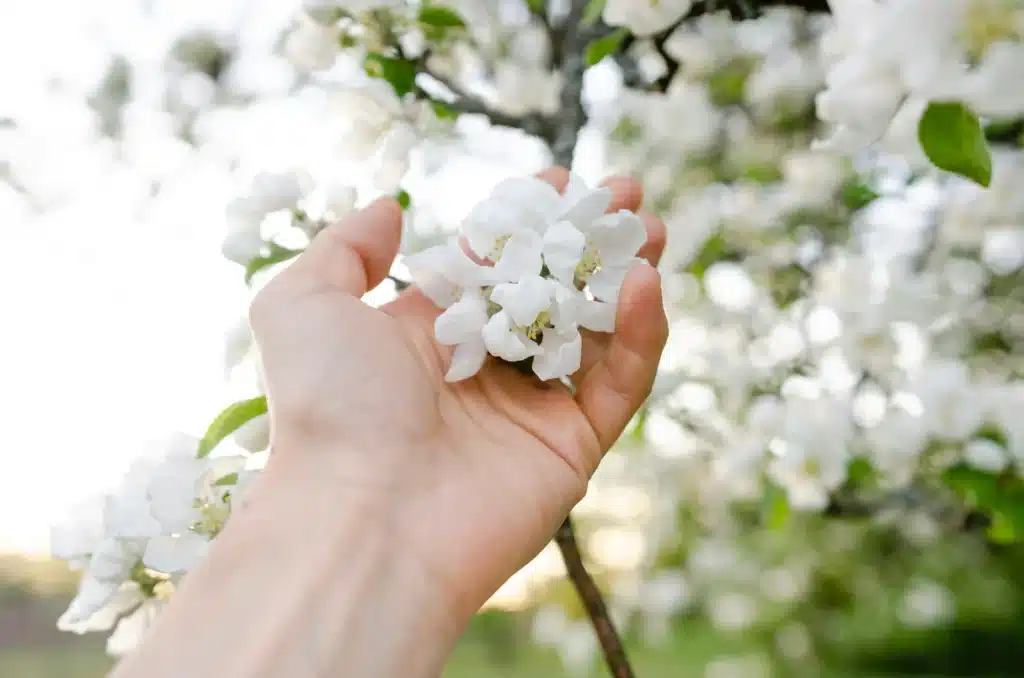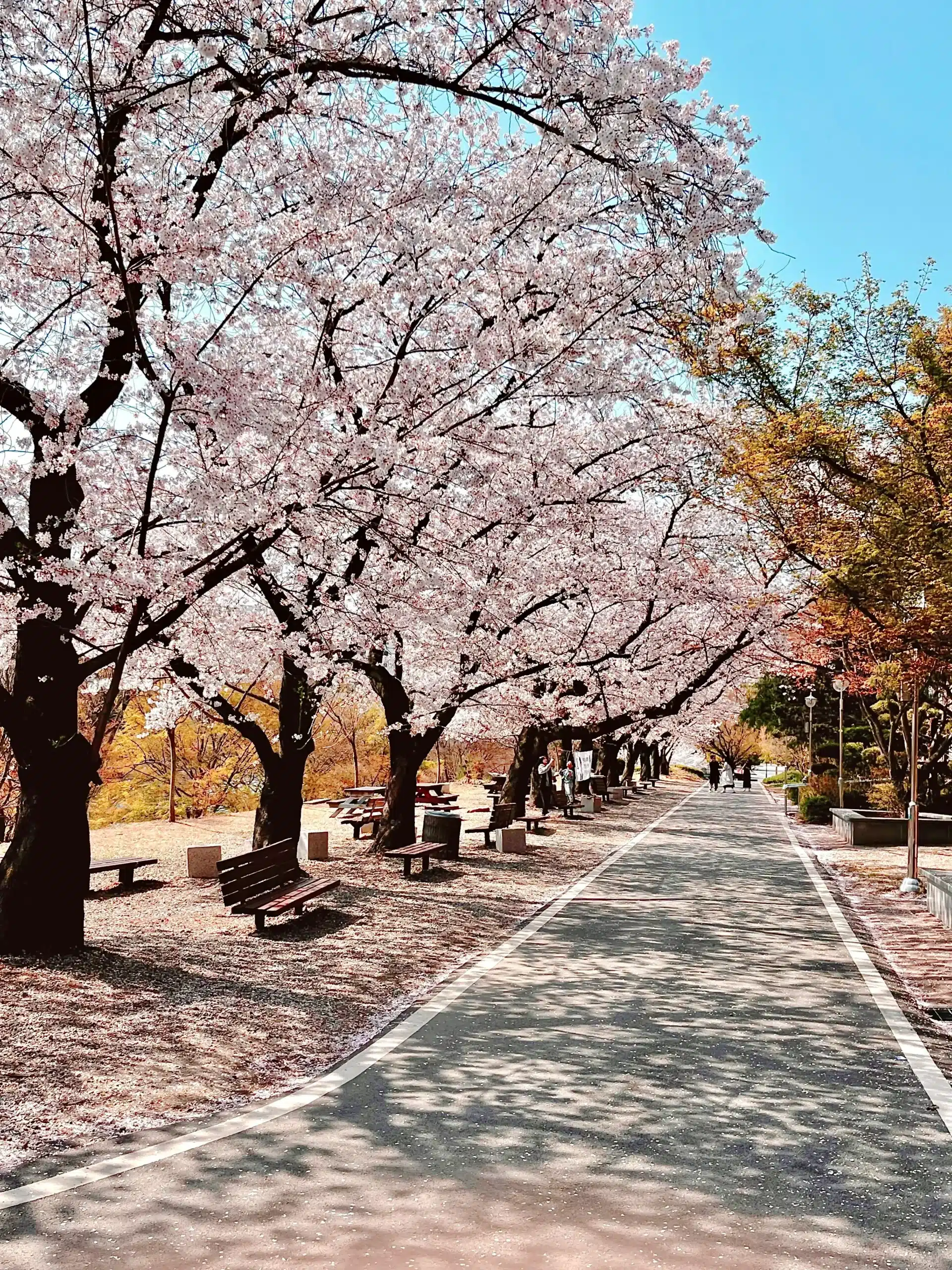Cherry blossoms herald the coming of spring. Ancient societies celebrated their ephemeral beauty in art and poetry for generations. These stunning flowering trees grace metropolitan landscapes and park environments across the globe.
When cherry blossoms bloom, a delicate aroma fills the air and a floral carpet spreads underfoot. But once their petals scatter, do cherry trees remain evergreen or lose their leaves like deciduous trees?
Cherry trees are deciduous, meaning they lose their leaves every autumn. Let’s examine why their characteristic spring bloom does not make them evergreens.
What Defines a Tree as Evergreen or Deciduous?
Trees are classified as either evergreen or deciduous based on their foliar properties:
- Evergreen trees keep their leaves year-round. They don’t have a dormant season and stay continually foliated. Some examples include pine, spruce, fir, hemlock, arborvitae, juniper, redwood, and cedar.
- Deciduous trees drop their leaves as an adaptation to cold winter months or drought seasons. Some examples include oak, maple, cherry, birch, ash, hickory, aspen, and many fruit trees. Their leaves grow back the following spring.
Many flowering plants bloom in spring. But flowering alone does not denote an evergreen species — it depends if trees retain or lose their leaves outside of the growing season.
Cherry trees produce showy flowers in spring, but they eventually discard their leaves when temperatures cool. That makes cherry blossom trees deciduous, not evergreen.
Do Cherry Blossoms Bloom All Year?
One reason for confusion is that cherry blossoms evoke images of perpetual flowering due to their popularity in art and iconography. But in nature, their bloom period is fleeting.
Bloom and Growth Cycle
- Early to mid spring
- Flower buds swell and blossoms open, beautifying bare branches
- Approximately 2 weeks
- Petals fall, green leaves emerge shortly after
- Spring through summer
- Foliage matures, providing shade and photosynthesis
- Fall
- Leaves turn hues of yellow, orange, red, or burgundy
- Leaves drop as tree goes dormant for winter
Cherry trees flower for just 1-2 weeks in spring. Their quick bloom time contributes to their charm as a sign of seasonal change. The bloom’s brevity also demonstrates they are deciduous trees.
Geographic Variances
Cherry blossom bloom times correspond with regional climates and cultures:
| Location | Average Bloom Time |
|---|---|
| Washington DC, USA | March 15 – April 10 |
| Kyoto, Japan | March 25 – April 7 |
| Vancouver, Canada | Early April |
| London, England | Early April |
While specific bloom periods vary, flowering generally lasts just a week or two. Cherry blossoms never bloom year-round in one location. Their growth cycle depends on seasonal changes.
When Do Cherry Trees Lose Their Leaves?
After flowering finishes, green leaves emerge to fuel summer growth through photosynthesis. When the shortening days of fall arrive, cherry trees prepare for winter dormancy.
Signs of Changing Seasons
In autumn, cherry tree leaves transform color from shades of:
- Bright yellow
- Orange
- Red
- Burgundy purple
Pigments exist in the leaves year-round, but cooler weather causes chlorophyll to break down. This reveals more vivid hues before the leaves detach and waft groundward.
Cherry foliage provides a second stunning seasonal display before trees discard leaves entirely. Depending on climate and the flowering variety, cherry trees lose leaves between September and November in the northern hemisphere.
As a deciduous species, cherry trees lose leaves annually before going bare and dormant for winter. Their leafless branches remain until flowering recurs to herald spring’s return.
Contrast With Other Evergreen Flowering Trees
While they showcase flowers plus fabulous fall color, cherry blossom trees are not evergreen. But other flowering trees do maintain their leaves year-round. Let’s compare traits of evergreen magnolia trees versus deciduous cherries:
| Tree Type | Flowers | Leaves | Winter Appearance |
|---|---|---|---|
| Cherry Blossom (Deciduous) | Profuse light pink spring blooms | Green in summer, colorful in fall | Leafless from late fall into spring |
| Magnolia (Evergreen) | Fragrant white blooms sporadically throughout warm months | Waxy green year-round | Foliage remains in winter |
Both trees produce beautiful flowers desirable in ornamental landscapes. But after cherry blossoms fade, their trees lose all leaves in preparation for cold seasons. Magnolias retain green foliage during winter dormancy after flowering concludes.
Caring for Cherry Blossom Trees

While their fleeting flowers symbolize impermanence, cherry trees remain tremendously popular worldwide. These timeless mainstays originate from Japan.
Ideal Conditions for Growth
When incorporating cherry blossom trees into your landscape, consider:
- Climate: Certain species adapt to various growing zones. Pick types suited for local winters and ambient temperatures.
- Sun exposure: Most need full sun (at least 6 hours daily) to bloom prolifically.
- Soil: Well-drained but consistently moist fertile soil encourages flowers and growth. Amend clay-dense or sandy soils at planting time.
- Pruning: Remove dead or diseased branches in late winter. Shape and contain growth after leaf-out.
- Watering: Water deeply 1-2 times weekly until established for the first two years. Then provide supplemental water during drought. Cherry trees require moisture to set abundant buds.
- Fertilizing: Applying balanced organic fertilizer when growth starts in spring fuels flowering and health.
Taking steps to safeguard cherries from winter injury, insects, and fungus will maintain their trademark extravagant blooming.
Fun Facts About Cherry Tree Varieties
Over a dozen cherry tree species exist, hybridizing forms with even more variety. While all lose leaves before winter, examining their differences offers insight into choosing the perfect type for your landscape.
A few popular ornamental cherry tree cultivars include:
- Yoshino cherry: Extremely floriferous white blossoms. Medium winter hardiness.
- Kwanzan cherry: Double pink blooms. Tolerates partial shade plus somewhat soggy soil.
- Weeping Higan cherry: Pendulous branches draping small rose flowers. Dwarf form ideal near patios.
- Autumnalis cherry: Blooms reliably with cooler fall nights. Foliage turns brilliant shades.
Discover even more exotic and adapted flowering cherry trees at your local nursery!
Conclusion: Are Cherry Blossom Trees Evergreen?
To recap — while famed for epic spring blooming — cherry blossom trees are deciduous. They produce ephemeral flowers followed by summer foliage. But as seasons shift, cherry trees discard their leaves to conserve energy before winter dormancy.
Magnolias, pines, and other evergreens retain leaves year-round. Deciduous cherry blossom trees rely on seasonal changes to cue their spectacular flowering displays welcoming spring.
Nature’s cycles mean the stunning sea of blooms we joyously anticipate will soon float away once again. Appreciating cherry trees means relishing in that delicate yet recurring beauty — however fleetingly it graces us.
